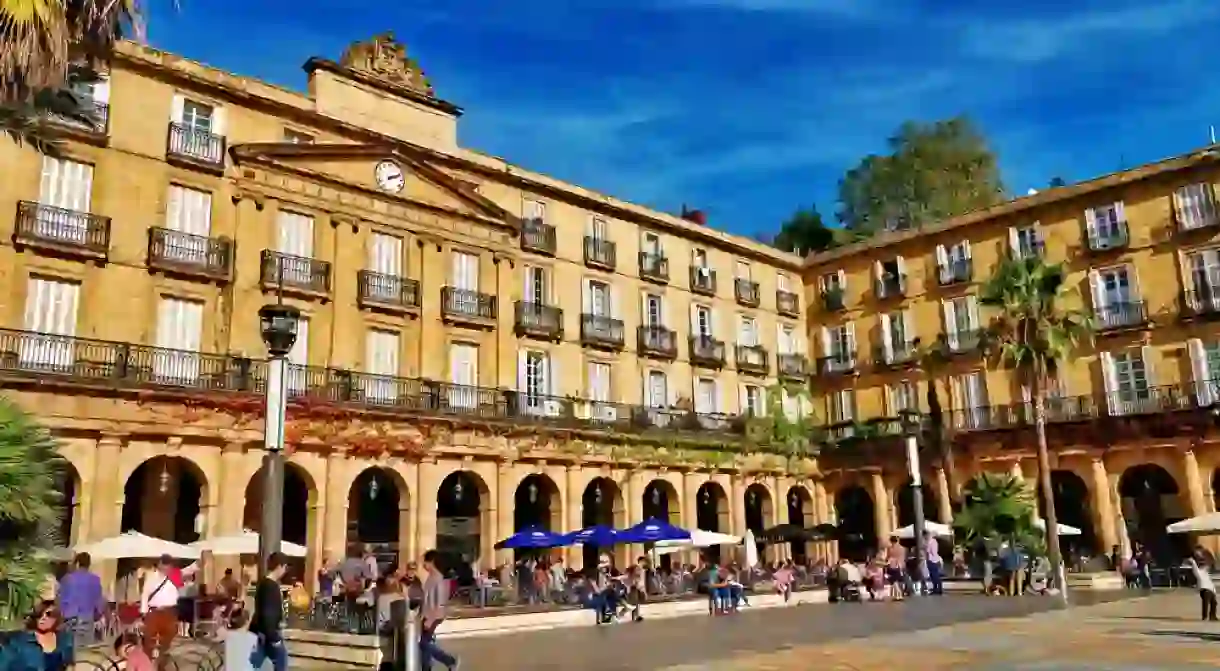Top Things To Do And See In The Basque Country

The Basque Country has much to offer. Explore beaches and cuisine, see spectacular views and visit museums in the area for never-ending fun.
The Guggenheim Museum
Building, Museum

The Guggenheim Museum in Bilbao is among the world’s best museums, offering a huge display of modern and contemporary art, much of it created by Basque artists. It is not only famous for the excellent collection that it holds, but also for the impressive curved building in which it is all housed, which is itself considered an architectural masterpiece. As well as an excellent permanent exhibition, there are also ever-changing temporary ones, which are carefully composed and which bring new life and freshness to the museum.
San Sebastian-Donotia's beaches
Bar

San Sebastian-Donostia’s Concha Bay is an iconic part of a trip to this Basque city. Its most celebrated beach is La Concha, which is praised for its breathtaking landscape and is considered to be one of the most beautiful beaches in Europe. The spectacular bay sees many tourists, particularly during the summer, offering its visitors four luxurious beaches: La Concha, Ondarreta, Zurriola and Isla Santa Clara’s beach. Sun-bathing, volleyball, surfing and relaxing in a beach bar are only a few of the activities possible in Concha Bay.
La Bretxa
Market
Markets are popular in the Basque Country, where food and especially seafood is an integral part of Basque culture. To find the best of Basque seafood however, there is no better place to look than in La Bretxa in San Sebastian-Donostia, a market in which vendors consider the freshness and quality of the products to be of the utmost importance. The sea-products sold here, such as hake, eels and even barnacles, are all caught in nearby ports and are therefore seasonally sold.
Saint Mary’s Cathedral and Cloister Bayonne
Building, Cathedral
Vittoria-Gastéiz, the quiet capital of the Basque Country, is home to a stunning cathedral built in the 13th and 14th century – the Cathedral of Santa María. Although this cathedral, which is a UNESCO World Heritage Site, is undergoing restoration work, it is still open to the public and professional tours are given round the building. These tours invite tourists to explore the history of Vitoria-Gasteiz, plunging into an exciting recount of the history of this Gothic cathedral.
Sainte-Marie Cathédrale
Bayonne has its own beautiful Catedral Sainte-Marie, which was built in a gothic style using only white and red stone sourced nearby. This architectural beauty holds relics of St Léon, one of Bayonne’s Bishops from the 9th Century. Located at the heart of the historic centre and overlooking the Adour and Nive rivers, this World Heritage Site alongside the adjacent cloister is a must-see attraction when in Bayonne, for it is rich in history and artistic skill.
Musée Basque
Building, Museum
The Museé Basque, a splendid museum which has been open for almost a century, contains a wonderful exhibit of the history of Bayonne and the Basque Country. The collection of over 2,000 objects of historical interest is located inside a building typical of 18th century Bayonne and counts as the largest ethnographic museum in the whole of the Basque Country. Visit this museum to learn about the identity, traditions and roots of the Basque culture and its people.
San Juan de Gaztelugatxe
Bridge

San Juan de Gaztelugatxe is a breathtaking island in the Gulf of Gascony and is connected with the mainland by a stone bridge. 231 zigzagging steps lead to the summit of a small mound, where there is a little chapel dedicated to Saint John the Baptist. Take this magical walk of adventure in a luxurious island with magnificent views to enjoy the Basque landscape and come closer to nature. At the chapel don’t forget to ring the bell three times and make a wish.
Plaza Nueva
Market
La Plaza Nueva, located in the historic center of Bilbao, is an excellent example of the neo-classical influence in the city. Having replaced the plaza vieja(old square) and thus earning its name as the new square, La Plaza Nueva boasts arcade buildings and arches through which the square can be accessed. Nowadays, the square is frequently used for public events, such as folk demonstrations or festivals, and on Sundays a flea market selling old books, coins, stamps and other collectors’ items can be found. Many restaurants and taverns reside here, so look out for the traditional Basque pintxos.
Le Grand Stroll
Historical Landmark

A spectacular location for a coastline walk is Biarritz. The route starts at a lighthouse on a headland, and passes many other attractions. France’s second-oldest golf course, for example, is along the route, so perhaps book in for a game. If not, carry on to the glorious Russian Orthodox Church which was originally built for visiting nobility in the 19th century to see the magnificent dome. Other landmarks along the route are the Casino Barrière, Place Ste-Eugenie, the Museum of the Sea, Fishermen’s Port (built by Napoleon) and the Rock of the Virgin.
Train de la Rhune
If you are looking for a magical experience, don’t miss out on the Train of the Rhune. This charming little train dates back to 1924, climbs up to a summit 905 meters high, offering breathtaking views of the Pyrenees and the French and Spanish coastlines. A 35-minute trip to the top through the wild takes you past Pottok ponies, ponies which are unique to the Basque Country and which live in complete freedom, manech sheep, also originating in the Basque Country, and wild vultures.













